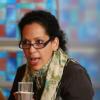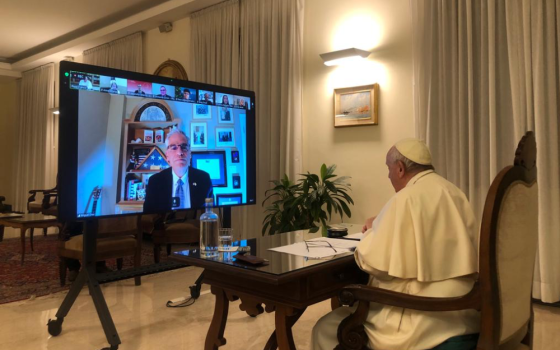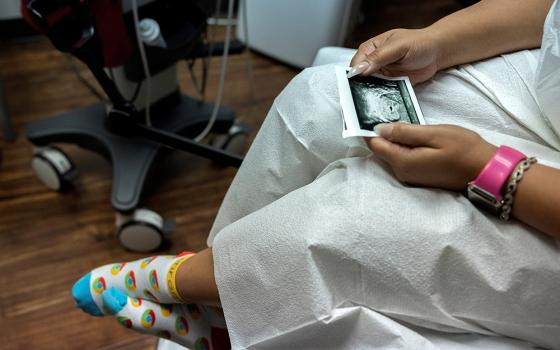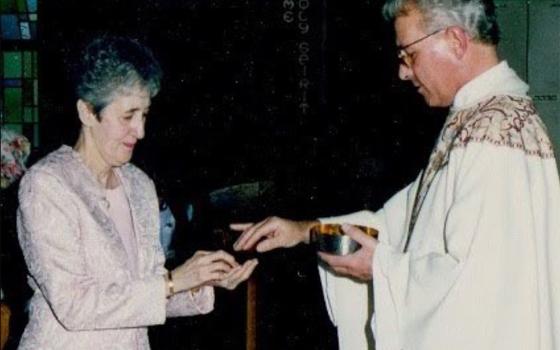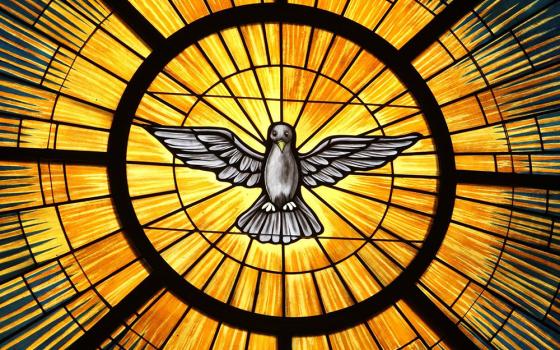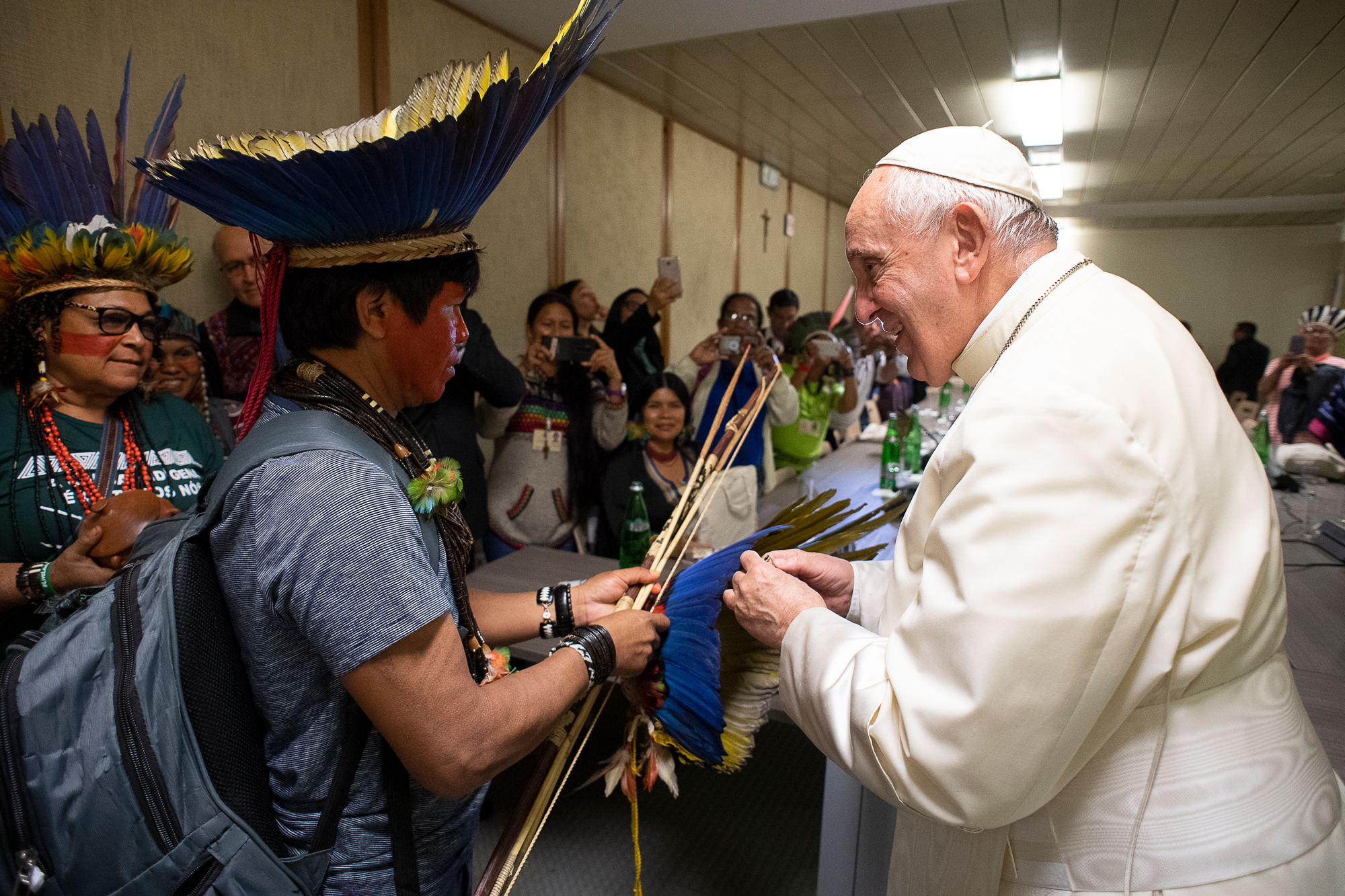
Pope Francis meets indigenous people from the Amazonian region during an encounter in the Paul VI hall at the Vatican Oct. 17, 2019. The meeting took place during the second week of the Synod of Bishops for the Amazon. (CNS photo/Vatican Media)
The past few weeks have cemented for me the sad reality that for too many within U.S. Catholicism there is only one way to be church. Commentaries and actions surrounding the Amazon synod suggest that the only and preferred model is Eurocentric — a model designed to exclude me and others perceived to be a threat to the purity of that church. Such critiques of the synod questioned its goals, dismissed the recommendations of the final document and attacked Pope Francis' approach of encounter as contrary to the "true" church. Participants, rituals and symbols were mocked even though they received welcome and were visible throughout the Synod's various Masses and prayers. It seems that for traditionalists within U.S. Catholicism the task of becoming church is that of building a pure church for the pure, rather than a poor church for the poor. If this last phrase comes across as too exclusive or hyper-focused on a particular class of people, then perhaps it could be rephrased. The task of becoming church is that of building a church for the crucified, seeing that Christians, everywhere and from every ideological persuasion, ultimately belong to the One who hung on a cross.
The statue of a woman became a key symbol for the drummed up controversy surrounding the Synod. The naked, pregnant, painted body of an indigenous woman was used at the opening prayer service and at various other ceremonies throughout. Traditionalists considered this statue idolatrous and profane, while others (myself included) considered it a representation of Our Lady of the Amazon, and still others, including some who contributed the statue to the ceremonies, considered it a representation of the sacredness of Amazonian life. On October 21 the statue and other replicas were stolen from the church where they were housed throughout the Synod and tossed into the Tiber River. As I have written elsewhere, I am deeply troubled by this act and by those who cheered it as heroic. This vandalism represented the many ways colonial violence has an ongoing and deep hold on Catholicism even today, especially in the U.S
Advertisement
The extensive critique and downright disdain toward the different cultural expressions used during the prayers and liturgies of the Synod signaled that for many in the U.S. Church that there is only one way to be Catholic, one way to live the life of the sacraments, one way to appropriately worship God. Not only were the diverse elements present at the Synod considered inappropriate, they were regarded as violations of church law and desecrations of holy spaces.
I tried to make sense of the violent words and actions being used against people whose own world has known the sacredness of the land for centuries, but whose own land and peoples have been violated without ceasing since the Conquest of the Americas. This pain is also personal because I too come from a land where ancient symbols hold deep meaning for a people whose land is sacred and equally marked by violence.
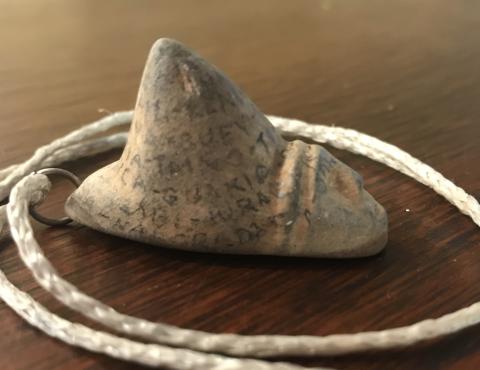
The author's personal cemí (M.T. Dávila)
In Puerto Rico, the native Taínos represented the sacred in the symbol of the cemí. The cemí is oblong shaped — like the island, has the legs of a frog on one end, the face of a Taíno person on the other, and in the middle a mountain representing the range at the center of the island.
Many years ago, my father, a devout Catholic and also a zealous student of indigenous cultures, painstakingly translated the Lord's Prayer into the Taíno language. He then found a cemí and inscribed this Lord's Prayer/Guakia Baba onto its sides. I wore this pendant around my neck in June 2016 to offer the reflection at the Mass for the Catholic Theological Society of America, which was meeting in Puerto Rico that year. This cemí with the Guakia Baba is one of my holiest possessions. It grounds my faith in a moment and on a land once untouched by colonial violence, and reaches back to the words of Jesus the Galilean articulated in yet another language, a language of my ancestors.
At that Mass I reflected on the gospel of the woman who washes Jesus' feet with her hair (Luke 7:36-50). My focus was on her radical hospitality, a hospitality that Jesus' host in the story had not bothered to show. This hospitality radically interrupted her life, the host's life and the life of Jesus as well. This hospitality ultimately meant her salvation. I see parallels between the statue of the pregnant woman from the Amazon, the cemí my father inscribed with the Guakia Baba, and the biblical story of the unnamed woman washing Jesus' feet with her hair. Each describes an encounter that leads to transformation.
"The task of becoming church is that of building a church for the crucified ..."
—M.T. Dávila
The synodality that Pope Francis proposes and insists on is that reunion of souls radically open to the extraordinary work of the Spirit. The requirement for these encounters is deep humility, profound listening and the stripping of assumptions. How many assumptions about her life did the woman in the story in Luke have to overcome to even reach the feet of Jesus? How many assumptions have been made about the meaning of all the different symbols brought to the synod? How many assumptions did my father have to overcome to bring together an indigenous language, the Lord's Prayer and the cemí ?
The synod on the Amazon modeled and proposes a modality of encounter that goes beyond inculturation. The fear expressed in some of the critiques is that this modality will lead to a descent into syncretism, allowing so-called pagan idols inside holy places of worship. We cannot pretend that the encounter called for by our faith does not radically change us, continually, and likewise impact our prayers, our liturgies, our rituals, our expressions of the sacred. I plead with the ones who would take sacred objects — like the statues of the synod or my cemí— and toss them in a river to stop. Put down the tools of conquest and violence, your words meant to kill the sacred in others, especially those that do not speak or look like you. In humility, I pray that we will engage in sacred encounter, together, and let the Spirit lead where it will.
[María Teresa (M.T.) Dávila is Associate Professor of the Practice, Religious and Theological Studies, Merrimack College.]
Editor's note: We can send you an email alert every time a Theology en la Plaza column is posted to NCRonline.org. Go to this page and follow directions: Email alert sign-up.
